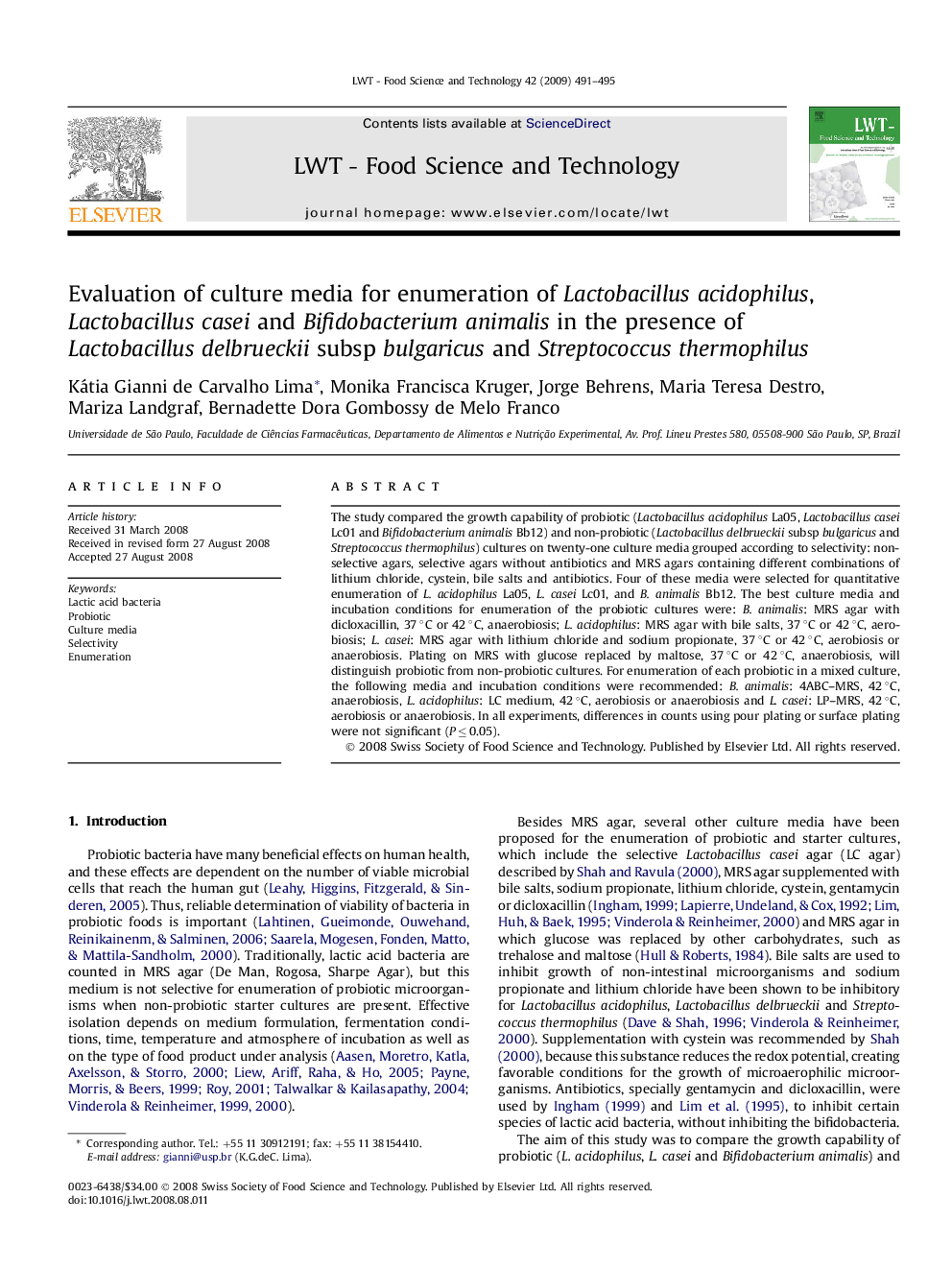| Article ID | Journal | Published Year | Pages | File Type |
|---|---|---|---|---|
| 4564540 | LWT - Food Science and Technology | 2009 | 5 Pages |
The study compared the growth capability of probiotic (Lactobacillus acidophilus La05, Lactobacillus casei Lc01 and Bifidobacterium animalis Bb12) and non-probiotic (Lactobacillus delbrueckii subsp bulgaricus and Streptococcus thermophilus) cultures on twenty-one culture media grouped according to selectivity: non-selective agars, selective agars without antibiotics and MRS agars containing different combinations of lithium chloride, cystein, bile salts and antibiotics. Four of these media were selected for quantitative enumeration of L. acidophilus La05, L. casei Lc01, and B. animalis Bb12. The best culture media and incubation conditions for enumeration of the probiotic cultures were: B. animalis: MRS agar with dicloxacillin, 37 °C or 42 °C, anaerobiosis; L. acidophilus: MRS agar with bile salts, 37 °C or 42 °C, aerobiosis; L. casei: MRS agar with lithium chloride and sodium propionate, 37 °C or 42 °C, aerobiosis or anaerobiosis. Plating on MRS with glucose replaced by maltose, 37 °C or 42 °C, anaerobiosis, will distinguish probiotic from non-probiotic cultures. For enumeration of each probiotic in a mixed culture, the following media and incubation conditions were recommended: B. animalis: 4ABC–MRS, 42 °C, anaerobiosis, L. acidophilus: LC medium, 42 °C, aerobiosis or anaerobiosis and L. casei: LP–MRS, 42 °C, aerobiosis or anaerobiosis. In all experiments, differences in counts using pour plating or surface plating were not significant (P ≤ 0.05).
